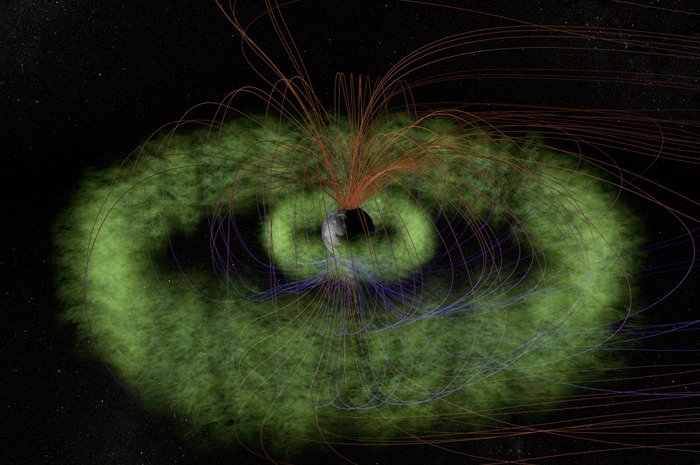Artists impression of the invisible Van Allen radiation belts. Credit: NASA
BOULDER, Colo., Feb. 28 (UPI) -- Researchers say data from NASA space probes has forced a revision of theories about radiation belts around the Earth just a few thousand miles above our heads.
Instruments designed and built by the University of Colorado Boulder have returned new finding on the Van Allen radiation belts -- donut-shaped rings of electrons that encircle the Earth that were one of the first discoveries of the space age.
Two spacecraft launched in 1958 carrying instruments built by James Van Allen showed the presence of two distinct rings of high-energy electrons.
A new NASA mission was launched Aug. 30 to learn more about the belts, which are known to be hazardous to satellites, astronauts and technological systems on Earth.
Just a few days after launch, CU-Boulder researcher said, the instruments on board returned a shocking result: the formation of a third radiation belt.
The instruments initially showed the expected two Van Allen belts, but after a few days the outer ring appeared to compress into an intense, tightly packed electron band and a third, less compact belt of electrons formed further out, creating a total of three rings.
The middle "storage ring" persisted as the belt furthest away from Earth began to decay away until a powerful interplanetary shockwave traveling from the sun virtually annihilated both the storage ring and the rest of the outer belt.
In the following months the Van Allen radiation zones re-formed into the originally expected two-belt structure, researchers said.
"We have no idea how often this sort of thing happens," CU-Boulder researcher Dan Baker said. "This may occur fairly frequently but we didn't have the tools to see it."
The findings could yield better understanding of how and when solar storms can wreak havoc on Earth, researchers said.
"Nature presents us with this event -- it's there, it's a fact, you can't argue with it -- and now we have to explain why it's the case," Shri Kanekal at NASA's Goddard Space Flight Center in Greenbelt, Md., said. "Why did the third belt persist for four weeks? Why does it change? All of this information teaches us more about space."















